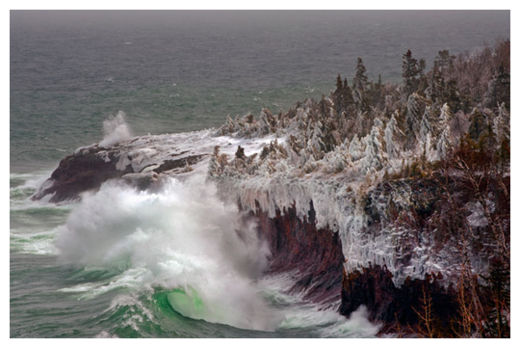
© Layne Kennedy/CorbisA nor'easter off of Lake Superior pounds Minnesota's North Shore near Tettegouche State Park.
From urban and developed to remote and isolated, lakes around Minnesota contain a wide range of chemicals, including DEET, BPA, prescription drugs and even cocaine.
The findings, which came out of the first large-scale, systematic statewide study, suggest that it might be worth taking a wider look at bodies of water around the country for chemicals that have potential consequences for both the environment and human health.
For now, it's not clear how all of the chemicals are getting into Minnesota's lakes or exactly what effects they might be having on animals or people.
"It's not as though people should worry about going to the lake or taking their dogs to the lakes," said Mark Ferrey, an environmental scientist at the Minnesota Pollution Control Agency, which published the new report. "We're talking about how we're affecting lakes and rivers in ways that we probably don't understand yet."
"It's disquieting," he added. "We could be affecting fish populations or entire ecosystems in ways that are largely invisible to us."
Starting about a decade ago, in routine reconnaissance, Ferrey and colleagues began collecting surface waters from rivers and streams around Minnesota. As expected, analyses showed contaminants downstream from wastewater treatment plants and in other highly developed areas. But the researchers were surprised when chemicals also turned up in background samples collected in lakes with mostly untouched shorelines.
